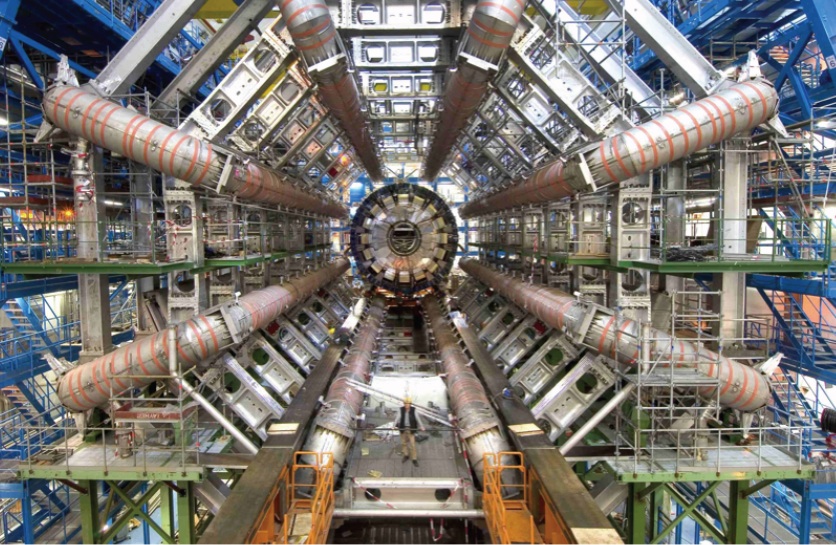Physicists New Tool - The Large Hadron Collider

I attended my fifth conference for high school physics teachers this summer at the University of California at Santa Barbara. This years’ conference was about the Large Hadron Collider (LHC). The ultimate goals of the collider are to determine what the universe is made of, and how it began. This month the LHC, located near Geneva, Switzerland, will begin colliding beams of protons that are moving around a 17 mile long circular loop at speeds of 99.9999991% the speed of light‐ 186,000 miles/second. It will attain energies that were present only one trillionth of a second after the big bang. Protons are members of a group of particles called hadrons because they experience the strong nuclear force that holds the nucleus of an atom together. Ironically, physicists must understand the physics of the very small in order to explain the very large. The detector shown above, called the ATLAS, is 7 stories tall, and is one of the four detectors that will be used to discover new particles such as the Higgs boson and the neutralino. The Higgs boson is thought to be responsible for why protons, neutrons, and electrons have different masses. Physicists now believe that the ordinary atoms that make up stars, planets, and living things are responsible for only 4% of the universe. The other 96% is unknown, but has been named “dark matter” and “dark energy”. Dark matter is so‐named because it cannot be seen, but can be detected by its gravitational effects. It is thought that galaxies such as the Milky Way needed dark matter in order to form. The neutralino is a leading candidate for dark matter. Physicists also believe there may be more than 4 dimensions‐ the 3 of space and 1 of time that we are familiar with. String theory predicts 11 dimensions, and proposes that the ultimate building blocks of the universe are not made of particles, rather they are made of very tiny loops of energy called strings. The LHC may give the first experimental evidence for these extra dimensions. Dark energy was first detected 10 years ago and makes the universe expand faster than expected. It is thought to be due to some unknown energy contained in empty space. The LHC may help discover this unknown energy in empty space. A good article about the LHC can be found in the March 2008 issue of National Geographic magazine or on the web at: http://ngm.nationalgeographic.com/2008/03/god‐particle/achenbachtext.
Terry Hipsher
